Urban Entomology: The Cicadas Are Coming!

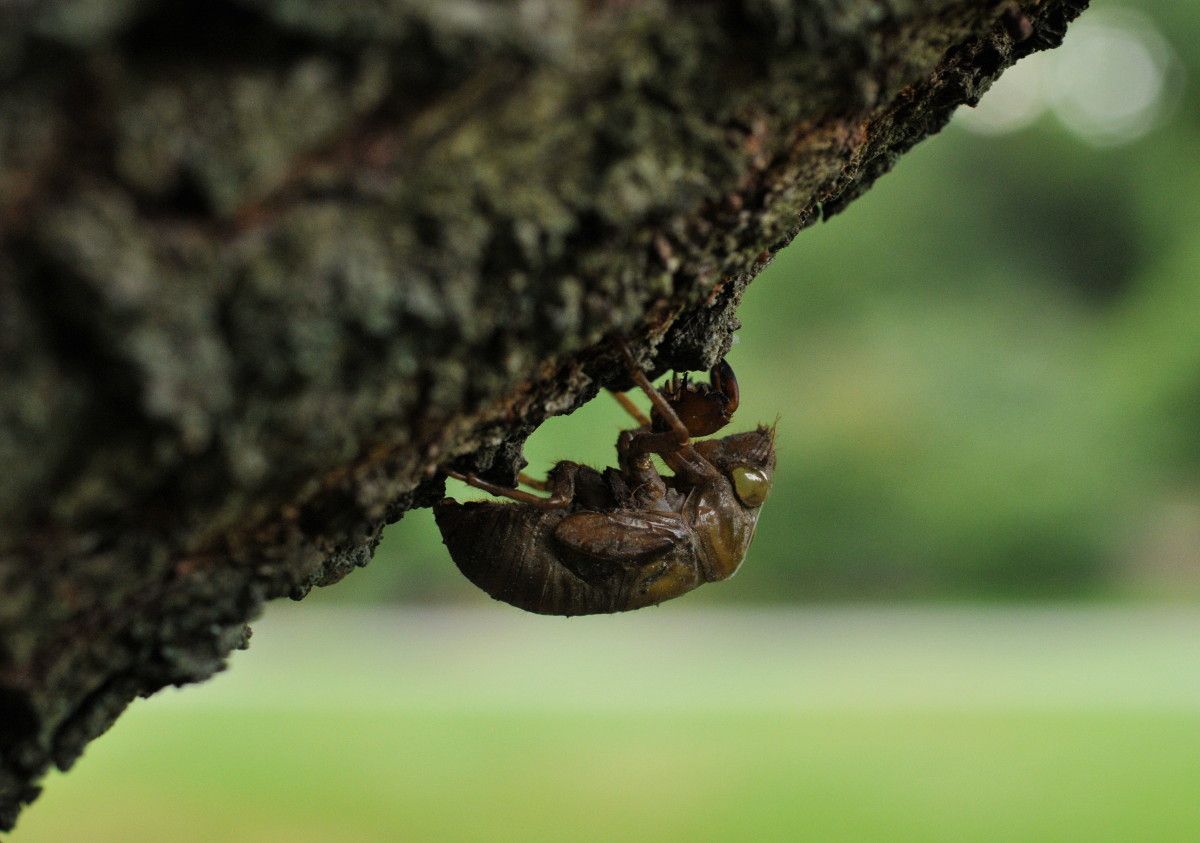
The highlight of every summer for me has always been the emergence of our annual cicadas. Last year, Brooklyn was disappointed to learn that urban development had severely lowered the numbers of our brood of periodical cicadas, known as Magicicadas, that only emerge from underground every 17 years (I had to take the train out to Wolfe’s Pond Park in Staten Island to witness them).
But I still always look forward to the sound of our annual cicadas, which come to visit us every year in their overlapping two- to three-year cycles. It’s the best subconscious backdrop to hallmark summer memories, and the whole of Ditmas Park is starting to ramp up for the emergence of our infernal (and loveable!) noise-makers once again…including creatures that think they’re quite tasty.
As of July 23, I had not yet heard any cicada song, but I did find a couple of fresh shells on the trees. It’s very likely these early risers were snatched up by one of the jostling ranks of predators that have been eagerly awaiting their arrival. An adult annual cicada is quite a large insect – around 1-5/8” including the wings – so a predator of such an insect would certainly need to be equipped with the tools to take it down.
Friends and neighbors, I’d like you to meet the Eastern cicada killer wasp.

Photo by Chris Kreussling
Last week, I was walking down Rugby, and my inner Sherlock joyously spotted the first obvious sign the cicadas were about to make their annual debut: The frenzied activity of giant wasps buzz-bombing each other around a rosebush! And upon further investigation, I discovered similar clashes of these neighborhood titans in other people’s yards and flowerbeds.
When I was a shorty, I was convinced these enormous wasps were queen bees engaged in some secret ritual, but, in fact, they are a separate species. The cicada killer wasp is a hunting wasp that does not live in communal nests; it’s a loner, and after mating it leads a relatively solitary life digging holes in the dirt and stuffing paralyzed cicadas down them to feed their larvae.
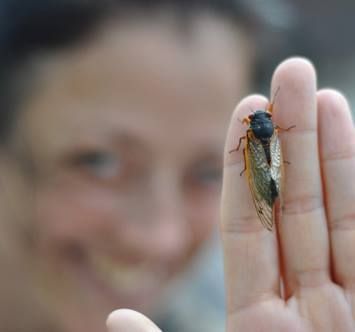
The buzz-bombing wasp activity that has been going on around Ditmas Park these days are the males, who have burrowed out of their hatching chambers and are staking out territories for the rights to mate with the females, who emerge about a week to two weeks after the males.
A male cicada killer wasp is a little more than half the size of a female, and will only live for about two weeks. Their imperative, which is being dutifully fulfilled right now, is that of battling for superiority and ensuring that only the strongest traits will be passed on to future generations of cicada killers. So be on the lookout, and don’t step on the crippled crawlers – those valiant males whose wings are so tattered they can no longer fly – these boys fought hard and deserve respect.
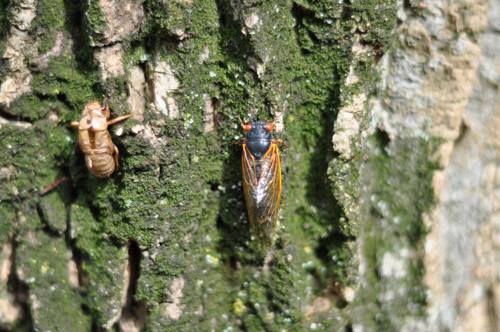
Though their size can be intimidating, cicada killers are not aggressive insects. The males don’t even have stingers – all their fighting is just grappling and biting. The females, of course, have stingers to paralyze their prey – but seriously folks, these gentle wasps don’t care about people one bit. If you get bumped into during one of their Thunderdome matches, you were probably just too close to the mosh pit. A person intent on testing the limits would have to go pretty far out of their way to provoke a cicada killer to sting or bite them (so if you’ve accomplished that, I’d say you probably earned it).
When the female cicada killers finally emerge, they will only mate once, and are then done with that mess. She has a neat little organ called a spermatheca, where she stores the sperm until she’s ready to start fertilizing her future progeny one egg at a time. She spends about two weeks scoping out a good site to lay her eggs, digging burrows, and waiting for the cicadas to begin emerging.
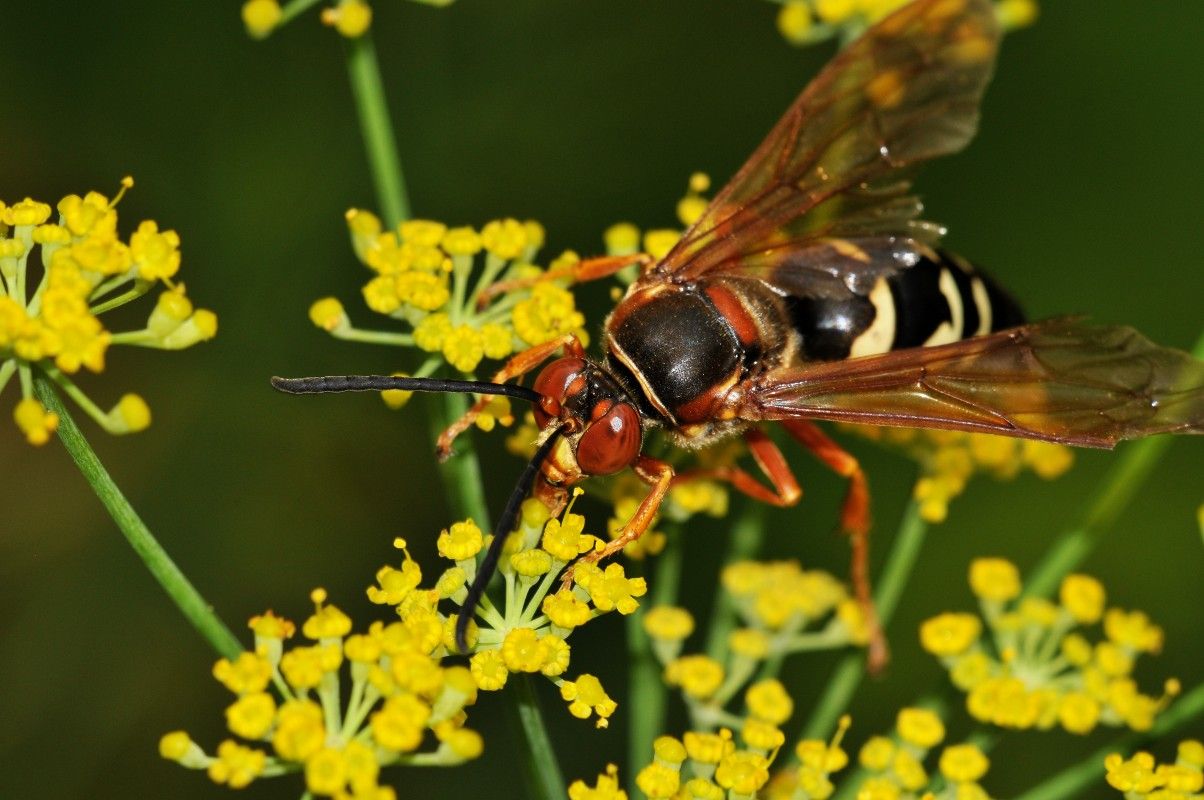
Photo by Steven Severinghaus
Once she’s found some prime real estate, a female cicada killer will dig out burrows with several nesting chambers in each, where she will eventually lay her eggs. These burrows can be located in drier soil, and are usually about three feet in length. There is a large egg chamber at the end of each branching tunnel of her burrow, where the female wasp drags the cicada once she’s paralyzed it with her sting. She stuffs it into the nesting chamber, and then lays exactly one egg beneath the second leg of the paralyzed cicada. A cicada is built like a tank but the skin is soft and flexible around its leg joints, giving her larva a nice soft spot to dig into when it hatches.
A cicada killer will generally fertilize about two-thirds of her eggs, and these eggs will become female. The ones she chooses to leave unfertilized will become males. When mom decides she wants an egg to be female, which are larger and require more food, she will haul in two (and sometimes three) cicadas for it to eat, while a future male will only get one.
Each of the larvae has its own nesting chamber in a burrow, and the female wasp will dig many more burrows as the season progresses. A single female cicada killer can lay around 60 eggs, and kill over 100 cicadas, if she’s ambitious, during her lifespan.
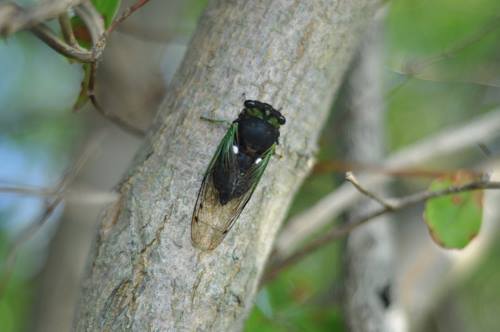
Sometimes you might see one hauling a paralyzed cicada up the trunk of a tree – but no, she doesn’t have a nest up there. What she’s doing is gaining altitude to parajump with her prize and so land closer to her nesting site. Cicada killer females are just about the same length as their prey, but a cicada weighs much more than the wasp and is difficult to transport under her own wing-strength, so this is a crafty trick she’s developed to save both time and energy.
Like their cicada prey, there is only one generation of cicada killer wasps per year, and after all the drama of courting, breeding, killing, evading-being-killed, and egg-laying, the adults of both teams will die.
There is so much information and inspiration to be found right alongside our own very busy and complicated lives. I think it’s just amazing to realize how diverse our urban ecosystems really are if we take the time to stop and look closely. There are cities within our city that we don’t even know about.
Lead photo by Steven Severinghaus




